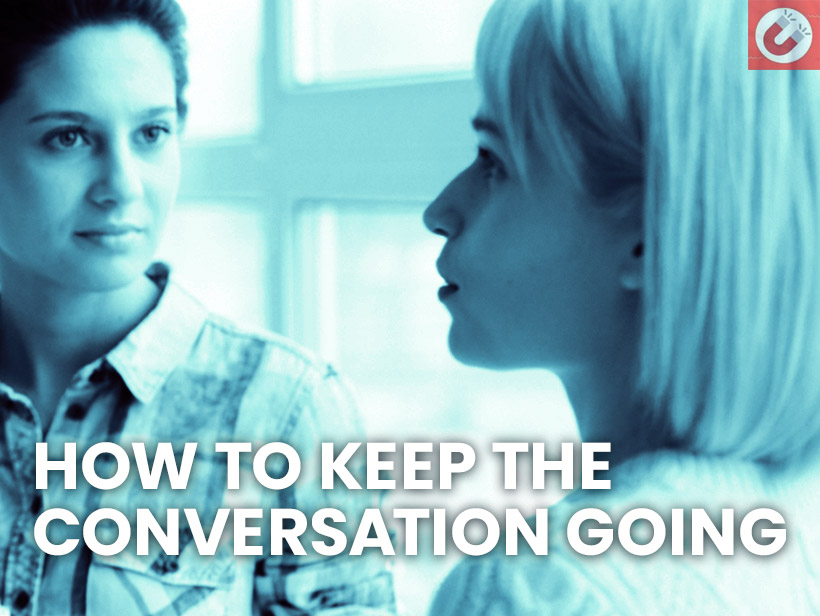Clingy behavior in a relationship may stem from a deep rooted need for reassurance and a fear of loss, leading to an overwhelming desire to be closer to someone. It can be a factor in relationships that may go unnoticed until it becomes a significant issue between partners.
“If you take too long to hit me back
– Ariana Grande, Clingy lyrics from the song “Needy”
I can’t promise you how I’ll react”
Clinginess can manifest as a range of challenging traits and may result in a strong desire for consistent access to someone’s time, attention, and validation.
It may be cute at first, but it can become very annoying and may eventually lead to abuse. Understanding and managing attachment behaviors is important for maintaining a healthy, balanced relationship where both partners feel secure and valued.
Being overly dependent and seeking constant reassurance can potentially harm the connection it aims to strengthen, but it is possible to overcome this behavior.
If you find yourself struggling with clingy tendencies or being emotionally manipulative, it’s time to explore strategies to build your independence and self-confidence up, and learn how to establish healthy levels of trust in your relationship.
What Does It Mean To Be Clingy In A Relationship?
Being clingy in a relationship means exhibiting a pattern of attachment that can often result from personal insecurities or fears. It’s characterized by a strong emotional reliance on a partner, leading to behaviors that can be perceived as needy in a relationship, and can become overbearing if left unchecked.
While the desire to be close to a partner is natural, clinginess crosses the line of healthy interaction, often resulting in feelings of “smothering,” suffocation and a lack of freedom for both individuals involved. Understanding the line between healthy affection and clinginess is crucial for nurturing a relationship that allows both partners to thrive.
What Are Some Examples Of Clingy Behavior?
Some examples of clingy behavior that may be perceived as overly dependent or attached include constantly seeking reassurance, needing constant contact or attention, becoming upset when not receiving immediate responses, and being overly possessive or jealous in relationships.
1. Need for Control and Validation
- Excessive Need for Reassurance:
Seeking constant approval to feel secure, reflecting deep-seated insecurities. - Demanding Constant Communication:
Needing frequent contact to alleviate anxiety, indicative of a fear of abandonment.
2. Jealousy and Possessive Behavior
- Jealousy and Possessiveness:
Feeling threatened by your partner’s social interactions, stemming from a lack of trust. - Controlling Behavior:
Trying to limit your partner’s activities, which can be a manifestation of insecurity.
3. Fear of Separation and Overdependence
- Struggle with Separation:
Feeling anxious when apart, suggesting an unhealthy reliance on your partner’s presence. - Overdependence:
Relying excessively on your partner for emotional support, indicating a lack of self-sufficiency.
4. Unreasonable Expectations and Constant Togetherness
- Unreasonable Expectations:
Expecting your partner to always prioritize you, often disregarding their needs. - Desire for Constant Togetherness:
Wanting to spend all your time with your partner, which can hinder personal growth.
5. Emotional Dependency and Insecurity
- Catastrophic Thinking:
Imagining the worst when not in contact, a sign of deep-seated fears and insecurities. This will often manifest as rumination or overanalyzing scenarios. - Difficulty Expressing Emotions Independently:
Struggling to process and express emotions without your partner, pointing to emotional dependency.
6. Codependency
- Codependency:
A tendency to form relationships where one person is overly reliant on the other for emotional and psychological support.
7. Lack of Personal Identity
- Lack of Personal Identity:
Losing sight of one’s own interests and values in favor of the relationship, which can lead to clinginess.
Why Do People Become Clingy?
People may exhibit clingy behavior due to various factors such as insecurities, fear of abandonment, past relationship traumas, low self-esteem, or a lack of independence and self-identity.
Self-Esteem and Insecurity
Low self-esteem and insecurity can be factors that contribute to clingy behavior. When individuals doubt their worth or fear abandonment, they may cling to their partner as a source of validation and security.
This can create a cycle where the clingy partner’s neediness exacerbates their insecurities, further fueling their clingy actions. It’s essential to address these underlying feelings of inadequacy to break free from clinginess.
Fear and Anxiety
Various factors such as underlying fears and anxieties about the stability of the relationship, past experiences of betrayal, or unresolved attachment issues can contribute to someone becoming clingy.
These challenges may make it difficult to trust in the natural ebb and flow of a relationship, leading individuals to hold on tightly in an attempt to maintain control and prevent perceived threats to the relationship’s security.
Past Traumas and Attachment Styles
Past experiences and early childhood events can have a significantly influence on attachment styles in adulthood. Someone with an anxious attachment style may exhibit clingy behaviors due to a fear of abandonment and a constant need for reassurance.
Understanding one’s attachment style can provide insight into why they might be clingy and how to work towards a more secure attachment in relationships.
How Can You Recognize If You Are Being Clingy?
Recognizing one’s own clingy behavior can be challenging, as it often feels like simply expressing love or concern.Apply Correction
Here are some telltale signs that your behavior may be crossing into clingy territory.
- Your partner expresses feeling suffocated or controlled by your behavior:
If your partner has mentioned feeling overwhelmed by your need for constant contact or reassurance, it’s a clear indicator that your behavior may be clingy. - You experience constant anxiety and worry about your relationship:
If you find yourself obsessing over your partner’s actions or fretting about the stability of your relationship without cause, it might be a sign of clinginess. - Your emotions are easily triggered by minor changes in your partner’s behavior:
Overreacting to small shifts in your partner’s mood or habits can be a symptom of underlying clinginess. - You struggle to maintain healthy boundaries in the relationship:
Struggling to maintain healthy boundaries in a relationship may manifest as difficulty in respecting your partner’s need for space or independence, which could indicate being overly clingy. - Your partner’s hobbies and activities make you feel jealous or uncomfortable:
Feeling insecure about your partner having interests outside of the relationship is often a reflection of clingy behavior.
How To Stop Being Clingy
Clinginess can stem from a place of fear and insecurity, but by working on yourself and understanding your partner’s perspective, you can overcome it.
If you notice signs of being overly attached in your behavior, it’s important to take steps to address it.
Here are some actionable steps to help you address behaviors that may be perceived as clingy and work towards building a stronger, more secure relationship.
1. Reflect on Your Behavior
Start by taking a reflective look at your actions and feelings. Are you frequently checking your phone for messages from your partner? Do you experience anxiety when they’re not around? Recognize these behaviors as indicators of attachment.
- Self-awareness is the initial step towards transformation, and comprehending your patterns will assist you in managing them efficiently.
2. Understand the Root Causes
Identify what contributes to your clinginess. Is it related to fear of abandonment, self-esteem, or past relationship experiences? Understanding the underlying factors of your behavior will help you address these issues at their core, rather than just the symptoms.
- Consider journaling and reflecting on your past, or talking to a therapist.
3. Communicate with Your Partner
Open up to your partner about your feelings of attachment. Honest communication can help them understand your perspective and offer support.
- Discuss setting healthy boundaries and expectations that work for both of you. Remember, it’s about finding a balance that respects both partners’ needs.
4. Develop Personal Interests
Invest time in hobbies, personal endeavors, and social activities that you enjoy independently of your partner. Developing your interests not only distracts you from clingy tendencies but also enriches your life.
- Having your own interests can contribute to being more well-rounded and potentially enhance your relationship by introducing new experiences and personal growth into the partnership.
5. Build Self-Esteem
Work on building your confidence and self-worth outside of the relationship. Engage in activities that promote self-esteem, set achievable personal goals, and celebrate your achievements.
- As you become more self-assured, you’ll rely less on your partner for validation, learn to live in the moment, and become outcome independent.
6. Manage Anxiety
If anxiety contributes to clinginess, consider finding healthy ways to manage it. This may involve mindfulness practices, regular exercise, or seeking support from friends, family, or mental health professionals.
- Learning to self-soothe and knowing what coping strategies work for you will help you manage social anxiety, address the issues that lead to it, and reduce clingy behaviors.
7. Give Your Partner Space and Practice Trust
Trust and giving each other space are essential in overcoming clinginess. Work on building trust in your relationship by being reliable and keeping your promises.
- Focus on different aspects of your partnership and remember that trust is essential for a strong, healthy relationship.Apply Correction
How To Cope If Your Partner Is Clingy
Dealing with a partner who seeks a lot of closeness can be a sensitive situation that necessitates patience and empathy. It is crucial to handle the situation tactfully to avoid causing any distress or bitterness. Establishing clear boundaries and providing reassurance can assist your partner in feeling more at ease while also preserving your own autonomy and emotional health.
Here are some strategies to cope with a clingy partner and help them overcome their insecurities.
Effective Communication Strategies
When a partner’s behavior becomes overly dependent and starts to impact the relationship, it is important to communicate your feelings calmly and clearly. Let them know how their actions make you feel and express your need for personal space.
- Approach conversations with empathy and avoid blaming language. Instead, focus on how you can work together to improve the situation.
Asserting Boundaries, Encouraging Independence, and Balancing Intimacy
Establishing clear boundaries is important in managing clinginess. It is helpful to have open discussions and come to an agreement on the amount of time you both spend together and apart. Encouraging your partner to pursue their own interests and hobbies can help them gain confidence and reduce their dependence on you.
- Maintain a balanced level of intimacy, showing affection and commitment to the relationship, while being assertive about your needs and boundaries.
The Effects of Clinginess on Relationships
For some of us, clinginess can be a major deal breaker.
Strong levels of attachment may have a negative impact on relationships, potentially leading to feelings of resentment and frustration. It can restrict a partner’s autonomy, sense of freedom and personal uniqueness, hindering the organic growth of intimacy.
- Recognize the effects of clinginess and take proactive steps to address the causes before they lead to more serious issues.
When Should You Seek Professional Help?
It’s important to recognize when clinginess becomes unhealthy and to acknowledge when you or your partner might need professional help.
Here are some signs that your clingy relationship might be a problem that you need help solving:
- If the clinginess is causing significant distress to yourself or your partner.
- If you struggle to manage clinginess on your own and it’s impacting your daily life.
- If the clinginess is rooted in deeper emotional issues or past traumas that you find difficult to overcome.
What Are Some Ways To Get Help With Clinginess In My Relationship?
Seeking help is a positive step towards building a healthier, happier relationship. There are several approaches to getting help with clinginess in a relationship:
- Individual therapy:
A therapist can assist in exploring the underlying causes of clinginess, developing effective coping strategies, and enhancing self-esteem. - Couples therapy:
This type of therapy can support improved communication, boundary-setting, and relationship dynamics for both partners. - Cognitive-behavioral therapy (CBT):
CBT focuses on recognizing and challenging negative thought patterns associated with clinginess. - Dialectical behavior therapy (DBT):
DBT aims to enhance emotional regulation abilities and address anxiety and insecurity. - Attachment-based therapy:
This therapy approach helps individuals understand their attachment style and cultivate healthy relationship attachments. - Social Coaching:
Jaunty provides a Social Skills Masterclass and an online Social Skills Gym to enhance social intelligence and emotional regulation through live, instructor-led classes and exercises.
Key Takeaways to Stop Being Clingy
- Identify behaviors that may be perceived as clingy and reflect on your emotional patterns
- Understand the roots of your clinginess, such as fear of abandonment or low self-esteem
- Invest time in personal interests and activities outside of the relationship.
- Practice open communication and establish mutual boundaries with your partner
- Focus on self-improvement to enhance confidence and emotional resilience.
- Manage anxiety through healthy habits and seeking professional support if necessary
- Social skills coaching can be highly beneficial in managing clinginess and forming healthier relationships.
- Developing self-assurance can lead to more autonomous and fulfilling relationships.
- Build trust with your partner, value your individuality, and promote mutual respect.
- Embrace these changes to create a more balanced partnership where all parties can thrive.



